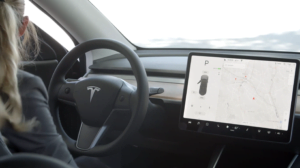
Tesla Quietly Axes Regenerative Braking Strength Option in Newer Models

Both Tesla and the electric vehicle (EV) company’s fanbase are akin to the process of swapping out new and old features, as new models are delivered over the years. However, not every change is a hit with fans.
According to Electrek, Tesla has silently removed a driver control option for regenerative braking capacity in its newer models. While it’s unclear why the change was made, regenerative braking has been a point of confusion for some new customers, since it requires a bit of practice to master.
Regenerative braking is a system that uses an EV’s motor to convert kinetic energy into electricity, charging the battery, but ultimately slowing down the vehicle. The benefits of regenerative braking include both a huge efficiency boost over conventional gas engines, and less wear and tear on a car’s brakes.
In the past, Tesla drivers could set the strength of the regenerative braking system to either “standard” or “low.” This allowed drivers to customize the feel of the system on their brakes, often a selling point for users unfamiliar with the way regenerative braking feels. It remains unclear why Tesla removed the options for regenerative braking.
An option for lower or reduced regenerative braking can be helpful in low-traction situations, particularly adverse weather conditions, to prevent losing traction.
With the visceral onslaught of climate change’s effects, it seems that anything Tesla can do to help people take the plunge into zero-emission vehicles is helpful – even if that means offering setting options that most owners aren’t even aware of.

